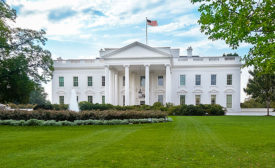Home » OSHA regulations
Articles Tagged with ''OSHA regulations''
Construction projects may need a post-pandemic update
Revisiting site assessments
May 13, 2021
Editorial Comments
50 years of OSHA
Agency hits landmark amidst many changes, unprecedented times
May 13, 2021
Thought Leadership
Risk Management: subjective perspectives, risk assessments and ethical dilemmas
May 13, 2021
Thought Leadership
A tangled web: subjective perspectives, risk assessments and ethical dilemmas
Part 1 of 3
April 27, 2021
Why is there OHS malaise in the U.S.?
Voluntary best practices implementation is risk management
February 8, 2021
Become a Leader in Safety Culture
Build your knowledge with ISHN, covering key safety, health and industrial hygiene news, products, and trends.
JOIN TODAYCopyright ©2025. All Rights Reserved BNP Media.
Design, CMS, Hosting & Web Development :: ePublishing












